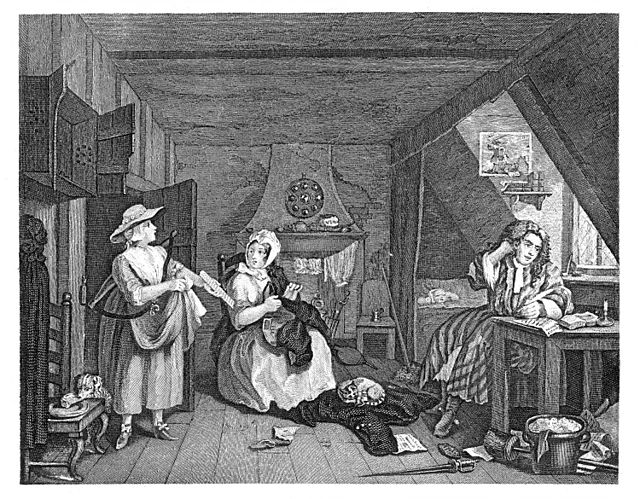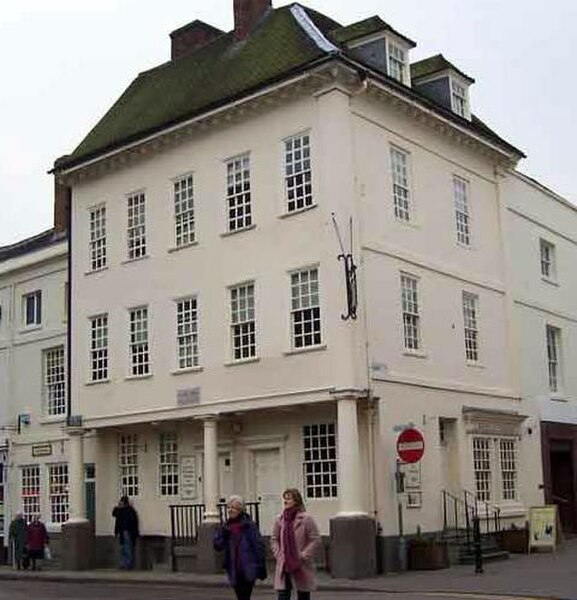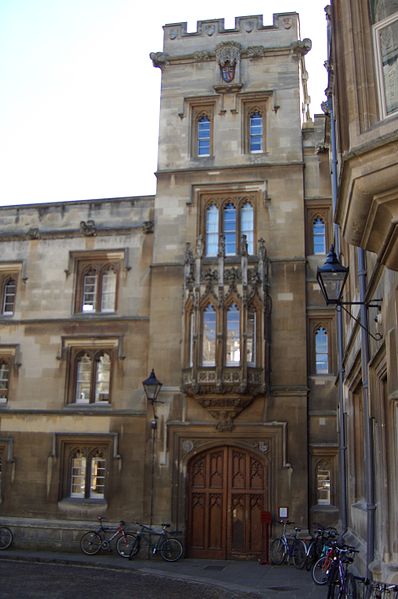Until the early 19th century, Grub Street was a street close to London's impoverished Moorfields district that ran from Fore Street east of St Giles-without-Cripplegate north to Chiswell Street. It was pierced along its length with narrow entrances to alleys and courts, many of which retained the names of early signboards. Its bohemian society was set amidst the impoverished neighbourhood's low-rent dosshouses, brothels and coffeehouses.
19th-century Grub Street (latterly Milton Street), as pictured in Chambers Book of Days
A late 18th-century illustration of a property on Sweedon's Passage, Grub Street
A copy of The Grub Street Journal lies at the writer's feet, in William Hogarth's The Distrest Poet. Set in a garret, the print has been described as a study of a typical Grub Street writer.
The Coffeehous Mob, frontispiece to Ned Ward's Vulgus Britannicus (1710). The fruits of the Grub Street publishers were read and debated in houses like this.
Samuel Johnson, often called Dr Johnson, was an English writer who made lasting contributions as a poet, playwright, essayist, moralist, literary critic, sermonist, biographer, editor, and lexicographer. The Oxford Dictionary of National Biography calls him "arguably the most distinguished man of letters in English history".
Portrait by Joshua Reynolds, c. 1772
Johnson's birthplace in Market Square, Lichfield
Entrance of Pembroke College, Oxford
Elizabeth "Tetty" Porter, Johnson's wife








